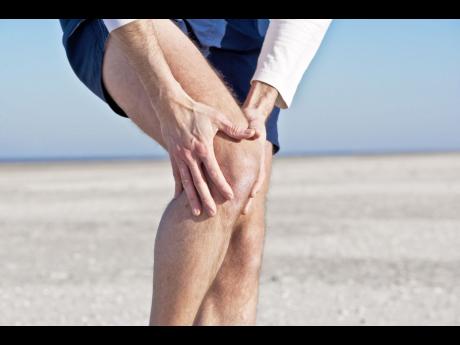Fit 4 Life | Growing pains
Post-workout pain is the bogeyman of the fitness world. Struggling to do simple everyday tasks, such as getting out of bed, because of pain is not what we imagine when we decide to get fit.
It is the reality for most, though, especially at the start of a new workout programme, to experience delayed onset muscle soreness (DOMS). 'Muscle fever', as it is sometimes called, usually starts up to two days after intense exercise. It results in pain, stiffness, and loss of range of motion in affected muscles.
WHY AM I SORE?
You can get muscle soreness from any unaccustomed activity. This is especially true for exercise. While the exact cause is obscure, it isn't caused by the build up lactic acid or a lack of post-workout stretching, as you might have heard. What is clear is that intense or unusual training is a major trigger. Fitness levels and genetics will also influence the level of pain felt.
HOW CAN I PREVENT THE PAIN?
There is only one clear and proven way of (somewhat) preventing soreness: by getting sore. The pain you experience from an exercise is usually less the next time you perform that activity, and it will ease much faster. We can avoid excessive soreness by being clever, however.
Starting new exercise programmes light and allowing your muscles more time to adapt before gradually increasing intensity may prevent the crippling form of DOMS you get from diving in at the deep end.
TAKE IT EASY
Avoid intense training of sore muscles, especially within the first 48 hours. Light exercise – often termed 'active recovery' – can speed up recovery by increasing blood flow to the affected tissues and may also improve range of motion and provide (some) temporary relief. Ensure that the level of intensity in active recovery workout sessions is low; think, "walk, not run".
TIME CURES ALL ILLS
DOMS is temporary and will go away with time. There is no known cure or simple treatment of it.
While you pass the time, the following have been shown to have positive effects or provide temporary relief:
- rest
- antioxidants from cherry and berries
- massages and foam rolling
- increased protein intake
CALL THE DOC
Injuries are often mistakenly brushed aside as DOMS. If the symptoms don't ease within three to four days, you could be dealing with one. Pay attention to pain that is sudden or localised or somehow different from DOMS you have experienced before.
- Marvin Gordon is a fitness coach; email: marvin.gordon@physiqueandfunction.com; yourhealth@gleanerjm.com

